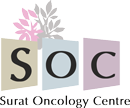Project Description
The cells of your testicles, which produce sperms and other male hormones, can grow out of control, causing Testicular Cancer, like any other type. But the condition is rare and mostly affects young men of the 20-35 age group. It can affect both testis and can also spread to surrounding nodes, called the lymph nodes, which drain fluid from them, and other organs. The risk of having the disease increases in persons who have/had undescended testis (AKA cryptorchidism), a condition in which one side of the scrotum remains empty and testis can be found in groin or abdomen, or in people who are immediate relatives of proven testicular cancer patients.
Most common symptoms are:
-
Lump or swelling in the testicle
-
Heaviness or aching in the lower belly or testicles
-
Voice changes and facial and body hair growth in a very young boy (early puberty)
-
In some cases, there may be fluid collection in the scrotum which can be identified in children easily. The lump can be painless, and any painless lump should be seen by a doctor.
Anything that can increase the risk of getting a disease is called a risk factor. Different cancers have different risk factors. Having one or more of these risk factors doesn’t necessarily mean one will get that cancer.
As testicular cancer is rare, the risk of developing it is small even if one has any risk factors.
- Undescended testicles
- Abnormal cells in testicle
- Fertility problems
- Previous testicular cancer
- Family history
- Hypospadias
- Inguinal hernia
-
-
Ultrasound scan of the scrotum/inguinal area/abdomen: Often the first test to be performed, an ultrasound can detect the size and nature (fluid filled/cystic or solid) of the swelling, its position in case of undescended testis, and a hydrocoele.
-
Blood tests: This includes routine blood tests as well as ‘tumor markers’ which are certain proteins/hormones which get elevated in certain cancers, depending upon the cancer site. In testicular cancers, important ones are Alpha Feto Protein (AFP), beta – Human Chorionic Gonadotropin (beta HCG), and Lactate Dehydrogenase (LDH). The elevated levels are not specific or confirmatory but can still help doctors to arrive at a diagnosis and to assess post treatment status.
-
Other scans: Once the doctor sees that the swelling is suspicious, body scans should be performed, to assess the extent of local and distant spread, which include CT abdomen and chest, X-ray of the lungs which are the most common site of distant spread, or a PET-CT scan, if whole body imaging is required.
-
Biopsy and pathological examination: This is the confirmatory and mandatory test. Biopsy is done by unilateral or bilateral orchidectomy (removal of the testis through surgery), after which a pathologist checks under the microscope to find out the types of cells that are out of control. The treatment modalities are entirely dependent on this.
Types, Grades and Stages of Testicular cancer
The cancer can be classified into-
-
Seminomas -Tumors that grow and spread slower than most other testicular cancers.
-
Non-seminomas – Tumors that are often found in younger men, who are in their late teens and early 30s.
Grading
This helps doctors to predict how fast the cancer is likely to grow and spread. Cancer cells are graded based on how much they look like normal cells. Usually grades 1, 2, and 3 are given, based on how different the cells look from normal cells. Cells that look very different from normal cells are given a higher grade (3) and tend to grow the fastest.
Staging
It depicts the status of spread. Testicular cancers can be staged into 0-III stages and subsets A-C, depending upon the size of testicular cancer, number and site of lymph nodes involved. As the stage increases, disease severity also increases, with stage III being the most advanced form of this disease.
-
Fortunately testicular cancer patients respond well to both chemotherapy (medicines) and radiation. Treatment modalities are decided based on the stage of the disease and other risk factors.
Stage 1:
-
Surgery (orchidectomy) – Followed by surveillance.
-
Chemotherapy – Indicated in certain patients, if the possibility of recurrence of the disease is high due to cryptorchidism and/or family history.
Stage 2:
Seminoma – Surgery and radiotherapy, or chemotherapy may be required in later stages.
Non-seminomas (teratomas) – Surgery (orchidectomy) and chemotherapy may be required.
Stage 3:
After orchidectomy- Chemotherapy.
If seminoma – After chemotherapy, only follow ups are required.
If non-seminoma – The patient might need surgurical removal of lymph nodes and lung lesions.
Recurrent Tumor – Chemotherapy or High dose chemotherapy with stem cell transplant – A stem cell transplant lets doctors use higher doses of chemo. The cells that make blood (called stem cells), are taken out of the blood using a special machine. Then very strong chemo is given, which can lead to side effects like severe reduction in blood counts. So, the stem cells are given back to the person, after chemo, to aid his system.
Clinical trials- Clinical trials are research studies that test new drugs or other treatments in people. They compare standard treatments with others that may be better. These mostly have to be given to people in whom the disease has relapsed.

